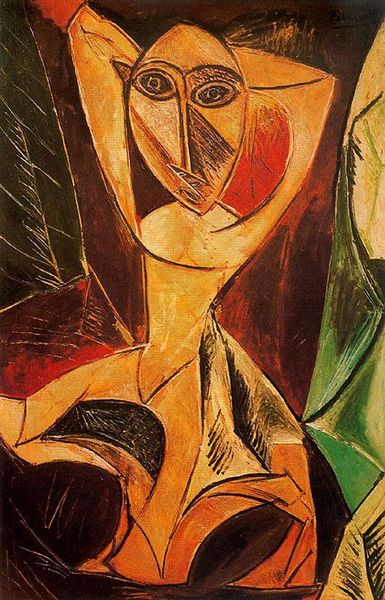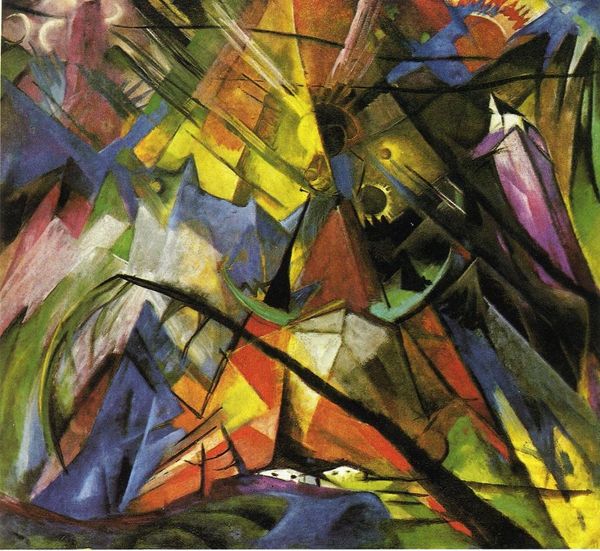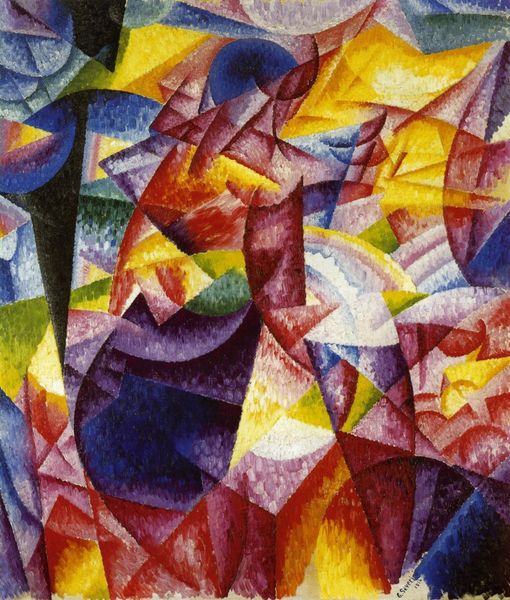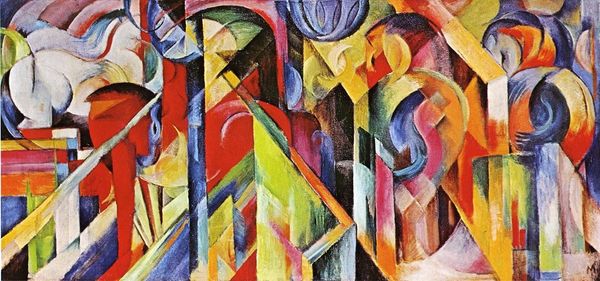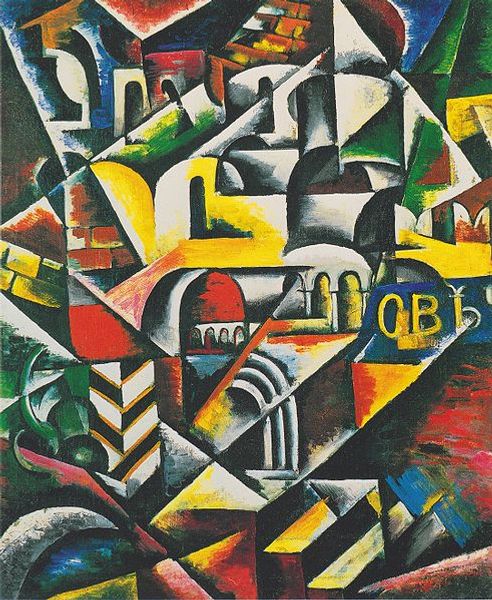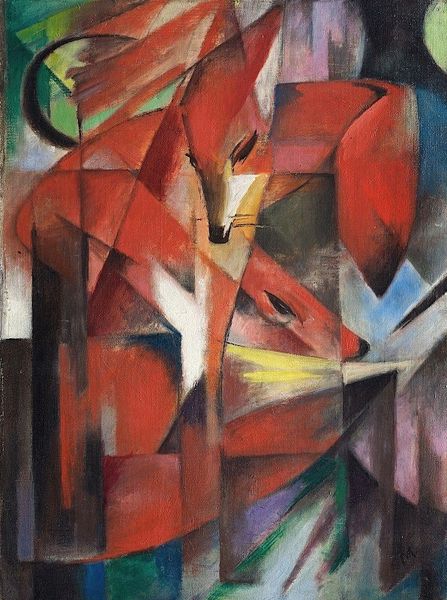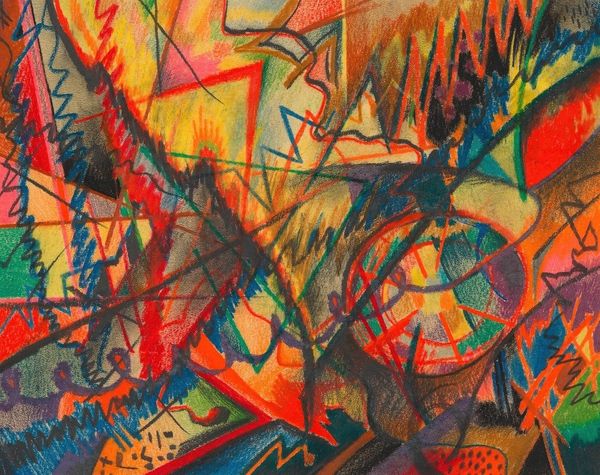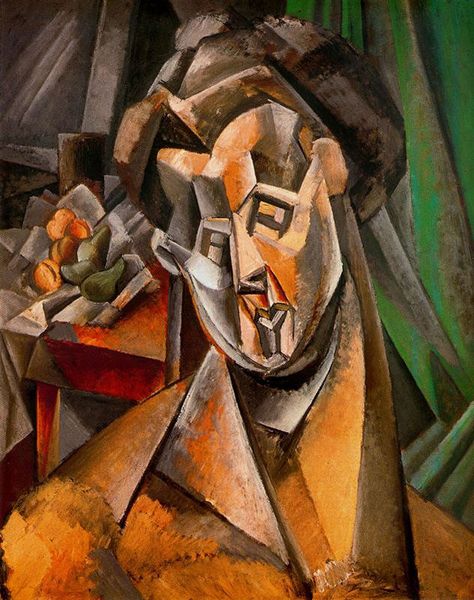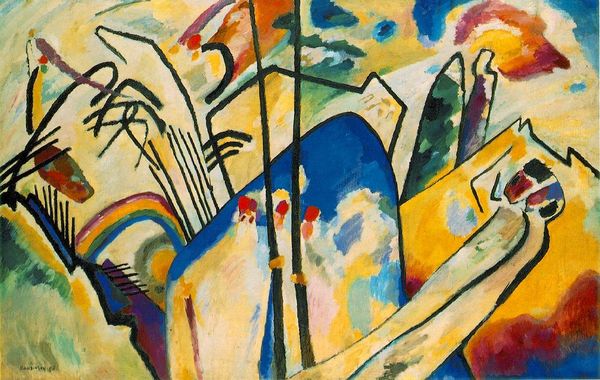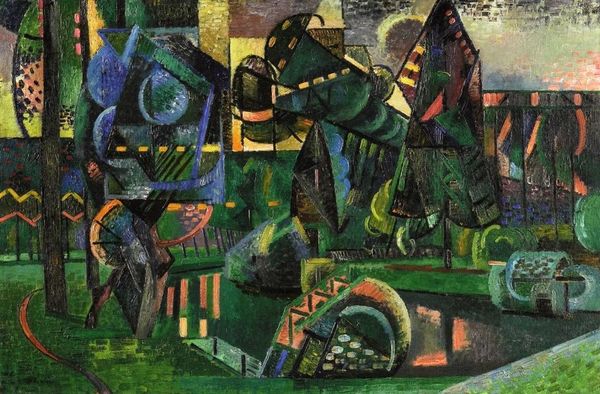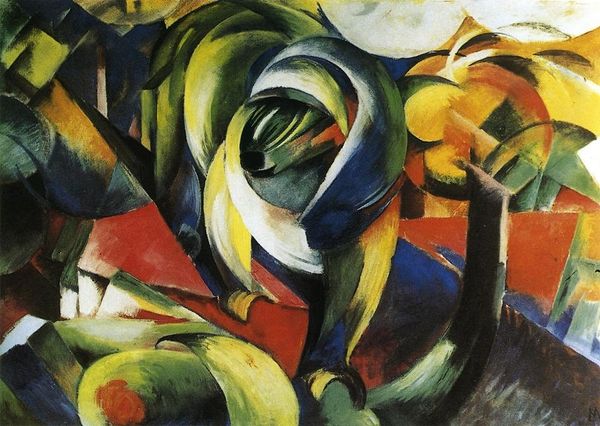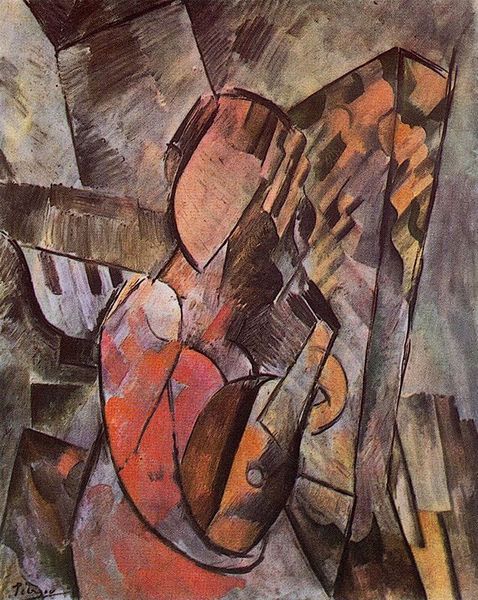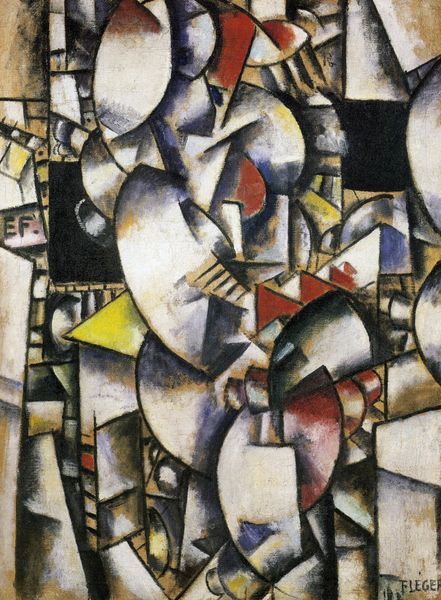
painting, oil-paint
#
portrait
#
cubism
#
art-nouveau
#
painting
#
oil-paint
#
figuration
#
female-nude
#
abstraction
#
abstract art
#
nude
Dimensions: 150 x 100 cm
Copyright: Public domain US
Art Historian: Hello there! I’m delighted to explore this painting with you. Editor: Hi! We're looking at Picasso’s "Dance of the Veils" from 1907. It’s an oil painting and it looks… fractured, almost aggressively so. I mean, it’s supposed to be a figure, but it's hard to piece it all together. What do you make of it? Art Historian: The fracturing you perceive is critical. Let's think about 1907. Picasso is standing at a precipice, poised to dismantle centuries of artistic convention. What narrative is being dismantled, do you think? And why is that politically potent? Editor: Well, if it's a figure, a nude... is it about breaking down traditional ideas about the female body, about how women are represented in art? Art Historian: Exactly. Consider the male gaze, a long-standing construct that dictates how women are depicted and viewed. Picasso is not merely distorting form, he's dismantling a patriarchal perspective. Think about contemporaneous critiques of colonialism and imperialism—can you see how those themes might resonate here? Editor: That's interesting. I never considered how it relates to more than just visual form. So it's not only a radical artistic move, but also… Art Historian: A social and political statement. It is, after all, the role of the artist to question and challenge. He’s questioning power structures that control how bodies – especially female bodies – are seen and understood. Do you think the painting makes it seem celebratory or more confrontational? Editor: Confrontational, definitely. It makes me rethink how I approach this kind of painting. Art Historian: And hopefully encourages you to question the assumptions inherent in every artistic representation. Art isn't created in a vacuum; it reflects and refracts the socio-political realities of its time.
Comments
No comments
Be the first to comment and join the conversation on the ultimate creative platform.
